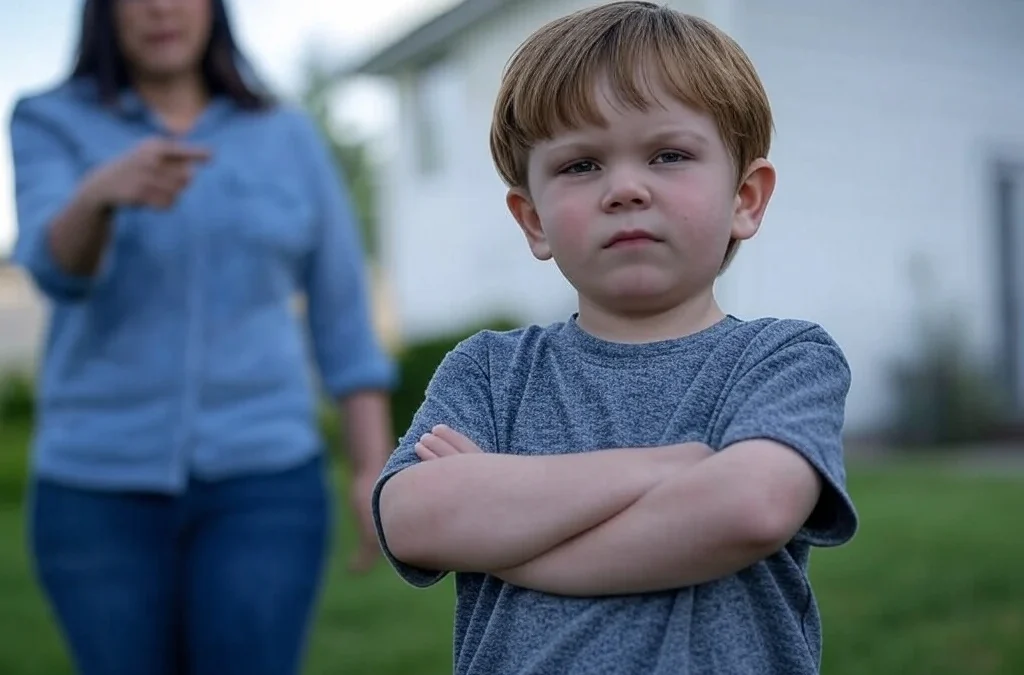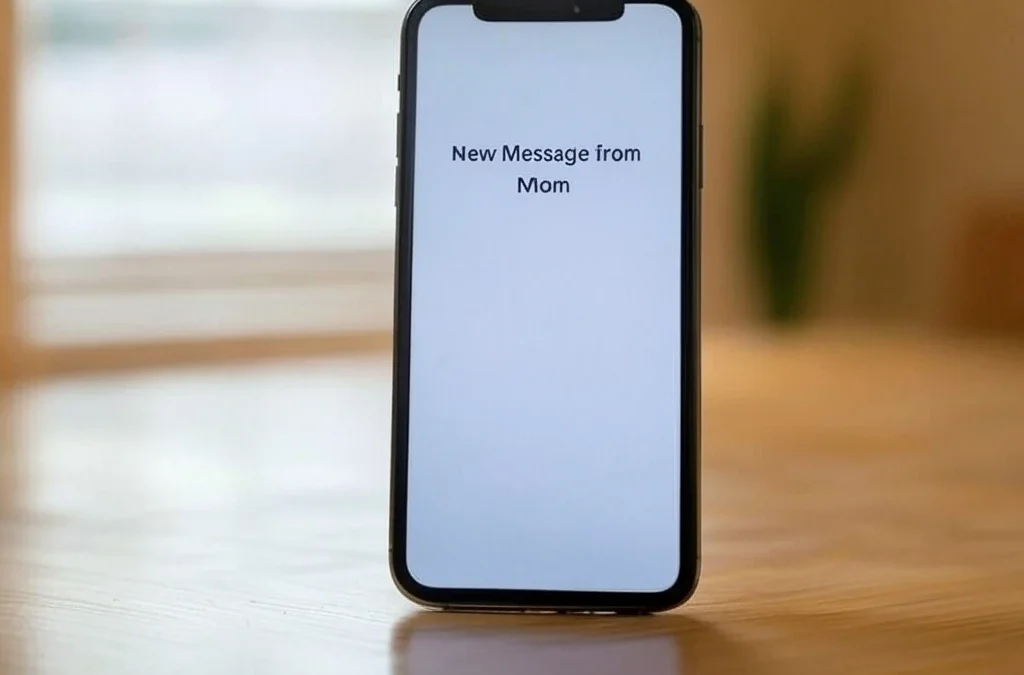In our increasingly digital world, the art of face-to-face social interaction remains essential for personal growth, professional success, and emotional wellbeing. Whether you’re an introvert looking to improve your social skills, a parent teaching your child about human connection, or simply curious about human interactions. This comprehensive guide explores 100 diverse examples of social interactions—from brief exchanges with strangers to deep conversations with loved ones—that showcase the breadth and depth of human connection in modern society.
What Is Social Interaction?
Social interaction refers to the dynamic process by which individuals act, communicate, and respond to one another in social settings. It includes both verbal and non-verbal communication, ranging from everyday conversations and greetings to more complex exchanges like collaboration, conflict resolution, and emotional support.
At its core, social interaction is how people build relationships, express thoughts, share emotions, and influence each other’s behavior in personal, professional, and public contexts. These interactions can occur face-to-face or virtually and are essential for developing social skills, emotional intelligence, and a sense of belonging.
In sociology and psychology, social interaction is considered the foundation of society and human connection. Whether it’s a casual chat with a stranger or a deep conversation with a friend, every social interaction shapes our understanding of ourselves and others.
100 Social Interaction Examples
Social interactions happen everywhere – from our homes and workplaces to public spaces and online platforms. Below is a carefully curated list of 100 real-life social interaction examples that reflect the many ways people connect, communicate, and engage with one another in everyday life. Use these examples to better understand human behavior, improve your social skills, or simply recognize the power of even the smallest interactions.
1. Greeting a neighbor with a smile and a quick “good morning” – A small but meaningful way to maintain a friendly connection in your community.
2. Shaking hands at a job interview – A formal gesture that sets the tone for professional interaction and displays confidence.
3. Asking a cashier how their day is going – A brief, often-overlooked social exchange that humanizes routine errands.
4. Making small talk with a stranger in an elevator – Those few seconds of casual conversation help reduce social awkwardness.
5. Apologizing sincerely after bumping into someone – A respectful act that shows social awareness and empathy.
6. Waving goodbye to a friend across the street – Non-verbal communication that maintains social bonds.
7. Thanking the bus driver when getting off – A courteous social habit that contributes to a respectful public environment.
8. Engaging in a debate during a college seminar – A high-level interaction that enhances critical thinking and communication skills.
9. Introducing yourself at a networking event – A direct and purposeful way to initiate professional relationships.
10. Asking for directions from a stranger – A practical interaction that involves trust and brief social cooperation.
11. Laughing at a co-worker’s joke – A moment of shared humor that strengthens workplace camaraderie.
12. Complimenting someone’s outfit – A kind gesture that can boost someone’s confidence and mood.
13. Arguing with a friend over differing opinions – Conflict is a natural part of deeper interpersonal communication.
14. Giving a toast at a wedding – A ceremonial form of public speaking that requires social intelligence and emotion.
15. Offering someone a seat on public transport – A thoughtful act that demonstrates empathy and social grace.
16. Volunteering at a community event – A deeper form of interaction rooted in teamwork and shared purpose.
17. Texting a friend to check in – Digital communication still holds strong social value.
18. Congratulating a colleague on a promotion – A professional interaction that reinforces positive workplace culture.
19. Debriefing with a teammate after a project – Reflection and communication are essential parts of collaboration.
20. Joining a group conversation at a party – Socializing in a casual group setting enhances adaptability.
21. Commenting positively on a social media post – A virtual yet meaningful interaction that shows support and acknowledgment.
22. Making eye contact during a conversation – Subtle but powerful non-verbal communication that fosters connection.
23. Participating in a book club discussion – A structured way to express opinions and listen actively.
24. Encouraging a friend going through a hard time – Emotional support is a cornerstone of deep social interaction.
25. Flirting with someone at a bar – A playful and intentional form of human connection.
26. Attending a family reunion and catching up – Rekindling ties through storytelling and shared history.
27. Ordering food at a restaurant and chatting with the server – A routine yet rich example of social engagement.
28. Listening actively to someone venting – Demonstrates empathy, patience, and emotional intelligence.
29. Asking a professor a question after class – A learning-oriented interaction that also builds rapport.
30. Helping a tourist with directions – A spontaneous form of kindness and social navigation.
31. Telling a joke to break the ice in a group – A classic technique to ease tension and initiate bonding.
32. Apologizing after a misunderstanding in a relationship – Requires vulnerability and communication maturity.
33. Negotiating a price at a market – A culturally common interaction that involves persuasion and reading social cues.
34. Sharing memories at a funeral – A deeply emotional and respectful interaction during moments of grief.
35. Inviting a colleague to lunch – Builds workplace relationships and trust through casual conversation.
36. Chatting with a barista while waiting for your coffee – A friendly exchange that brightens the day.
37. Debating sports with friends – Light-hearted yet passionate conversations that reinforce social bonds.
38. Attending a speed dating event – Fast-paced but impactful interactions that require focus and charisma.
39. Introducing two friends who’ve never met – A proactive way to bridge social circles.
40. Complaining to customer service (politely) – A formal interaction where tone and clarity matter.
41. Congratulating a classmate after a good presentation – Encouragement builds a positive learning environment.
42. Hugging a friend after a long time apart – Non-verbal connection full of emotion and warmth.
43. Catching up with an old teacher – Nostalgic and often meaningful, especially when appreciation is shared.
44. Whispering a joke during a meeting – A small rebellion that can strengthen bonds through shared humor.
45. Giving someone a sincere compliment during a rough day – Acts of kindness create emotional connection.
46. Arguing respectfully in an online forum – Virtual debate still reflects key social interaction dynamics.
47. Helping a co-worker carry something heavy – Team spirit often starts with small gestures.
48. Sending a thank-you card – Traditional, but highly appreciated communication showing gratitude.
49. Complimenting a stranger’s dog at the park – Low-stakes interaction that sparks cheerful conversation.
50. Cheering for a friend at their performance – Supportive actions boost morale and connection.
51. Correcting someone politely – Done right, it’s a mark of strong communication and mutual respect.
52. Mentoring someone new at work – A longer-term social relationship built on guidance and trust.
53. Listening to music with someone and discussing it – Shared interests form a basis for deeper social connections.
54. Offering someone tissues when they’re crying – A gesture of quiet empathy that says more than words.
55. Singing karaoke with strangers – Fun, uninhibited interaction that invites vulnerability and bonding.
56. Accepting constructive criticism from a supervisor – Builds communication strength and professional growth.
57. Responding to a group chat with humor – Keeps digital conversations lively and engaging.
58. Watching a movie with commentary from friends – Combines passive activity with active socializing.
59. Role-playing in a tabletop game – Creative interaction based on cooperation and storytelling.
60. Coordinating a group trip or event – Organizing people requires strong communication and leadership.
61. Having a heart-to-heart late at night – Intimate conversations often happen in quieter moments.
62. Debating politics civilly over dinner – Challenging, but enriching when done respectfully.
63. Giving advice after being asked for help – A sign of trust and a chance to strengthen bonds.
64. Bantering during a board game – Light teasing and laughter help people connect.
65. Helping someone move house – A labor-intensive interaction rooted in friendship and teamwork.
66. Practicing a language with a native speaker – A mutual learning experience with rich interaction.
67. Telling someone they have food on their face – Awkward but appreciated honesty.
68. Discussing future plans with a partner – A deeper conversation that reflects trust and emotional connection.
69. Meeting someone for the first time on a blind date – Nerve-wracking but exciting form of social interaction.
70. Reading someone’s body language in silence – Non-verbal cues are a critical part of human interaction.
71. Bringing food to a sick neighbor – Acts of service that embody social responsibility and kindness.
72. Speaking on a panel or in a webinar – Public-facing communication that impacts many at once.
73. Proposing a new idea in a meeting – Involves assertiveness, persuasion, and listening to feedback.
74. Reassuring a nervous friend before a presentation – Emotional support helps ease anxiety.
75. Recalling inside jokes from the past – Builds identity within a friendship or group.
76. Negotiating bedtime with a toddler – A funny but real example of communication challenges with children.
77. Speaking to a therapist – A professional yet highly personal interaction involving trust and reflection.
78. Running into an ex and making small talk – Awkward but common, requiring tact and social control.
79. Engaging in a cultural exchange abroad – Language, tradition, and connection merge in meaningful interaction.
80. Venting to a best friend – A raw and trusting communication that helps process emotions.
81. Roleplaying scenarios in job training – Simulated social interaction to build confidence.
82. Consoling someone after a breakup – Requires emotional sensitivity and attentiveness.
83. Telling a story at a dinner table – Sharing experiences is one of the oldest forms of bonding.
84. Explaining a hobby passionately – Enthusiasm helps connect with others who may relate.
85. Asking someone about their day and genuinely listening – Everyday empathy builds trust.
86. Reacting to surprise news – How we respond in the moment reveals a lot about our social behavior.
87. Teaming up during a group project – A classic example of collaborative interaction with shared goals.
88. Making a new friend while traveling solo – Unexpected connections often turn into memorable experiences.
89. Telling someone you appreciate them – Simple words, deeply meaningful.
90. Starting a conversation in a waiting room – A quiet setting where connections sometimes bloom.
91. Engaging in playful teasing with a sibling – A lifetime of shared history shapes this unique interaction.
92. Joking around in a group chat – Modern bonding through text, memes, and reactions.
93. Standing up for someone being mistreated – A brave social action rooted in justice and empathy.
94. Clapping for a performer at a local show – Shows recognition and shared appreciation.
95. Making a spontaneous new friend at a music festival – Connection through shared energy and joy.
96. Debating over a fictional character’s actions – Fun, passionate discussions rooted in shared interest.
97. Explaining rules to a newcomer in a game – Welcoming gestures that make people feel included.
98. Inviting someone to join your lunch table – Small actions that can make a big difference socially.
99. Reconnecting with an old friend over coffee – Rich in nostalgia and renewed connection.
100. Saying goodbye after a life chapter ends – The most poignant kind of interaction, full of meaning and emotion.
The Science Behind Social Interactions
Social interactions aren’t just pleasant exchanges—they’re fundamental to human psychology and neurological health. Research shows that meaningful social connections trigger the release of oxytocin, often called the “bonding hormone,” which reduces stress and enhances feelings of trust and empathy. Even brief positive interactions can boost dopamine levels, contributing to improved mood and cognitive function.
Studies from social psychology reveal that humans are hardwired for connection—our brains devote significant resources to interpreting social cues, facial expressions, and the emotional states of others. This “social intelligence” evolved as a survival mechanism, allowing early humans to form protective communities and pass down crucial knowledge.
In today’s digital age, neuroscientists have observed that virtual interactions activate similar brain regions as in-person connections, though typically with less intensity. This explains why text messages or social media interactions can feel meaningful but rarely substitute for face-to-face engagement when building deep relationships.
Why Social Interaction Feels Hard for Some People
Not everyone finds social interaction easy. For some, even basic conversations can feel uncomfortable. This isn’t always about being shy. Sometimes it’s about past experiences, low confidence, or just not knowing what to say.
People who were criticized or ignored growing up often struggle with speaking up. Others may feel anxious in groups or worry they’ll be judged. These are real challenges. And they’re more common than most people think.
But social skills can be learned. They’re not only for “naturally outgoing” people. Like learning to ride a bike, social interaction gets better with practice. Start small. Make eye contact. Say hello. Ask one question and really listen to the answer.
Being socially confident doesn’t mean talking a lot. It means knowing when to speak, how to respond, and when to be quiet. It means being present. It means caring about the person in front of you, even if only for a few seconds.
People remember how you made them feel. A short chat in a waiting room. A kind word in a stressful moment. These things matter more than we realize. Over time, small efforts lead to real growth.
It’s also okay to mess up. Everyone does. Awkward moments happen. What’s important is showing up and trying again. That’s how real communication skills are built—in real life, one interaction at a time.
Improving Your Social Skills: Practical Tips
Developing stronger social skills isn’t just about personality—it’s about practice and mindful engagement. Here are evidence-based strategies to enhance your social interactions:
- Practice active listening: Focus completely on the speaker rather than planning your response. Ask clarifying questions and summarize what you’ve heard to show understanding.
- Develop emotional intelligence: Work on recognizing both your emotions and others’. Notice non-verbal cues like facial expressions, tone of voice, and body language.
- Start small: If social situations cause anxiety, begin with brief, structured interactions like asking a question at a store or complimenting a coworker.
- Be genuinely curious: People respond positively to authentic interest. Ask open-ended questions that can’t be answered with just “yes” or “no.”
- Create a feedback loop: After meaningful interactions, reflect on what went well and what could be improved. Consider asking trusted friends for honest feedback.
- Practice inclusivity: Make conscious efforts to include others in conversations, especially those who seem hesitant to join in.
- Embrace discomfort: Growth happens outside your comfort zone. Gradually expose yourself to challenging social situations while practicing self-compassion.
Remember that social skills are like muscles—they strengthen with consistent use and deliberate practice. Even naturally charismatic people have typically invested thousands of hours in social situations, learning through trial and error.
Social Interactions Across Cultures
What constitutes appropriate social interaction varies dramatically across cultures. In some societies, direct eye contact shows confidence and honesty, while in others, it may be perceived as aggressive or disrespectful. Similarly, physical touch, personal space, and even the meaning of silence can differ significantly between cultural contexts.
For example, in Japan, the bow is a nuanced social gesture with variations depending on the situation’s formality and the relationship between individuals. In contrast, many Mediterranean and Latin American cultures emphasize warm physical greetings with hugs or kisses on the cheek, even among relative strangers.
Digital communication has created a fascinating new dimension to cross-cultural interaction. Emoji usage, response timing expectations, and even email formality can reflect cultural values around hierarchy, directness, and relationship-building.
When navigating cross-cultural interactions, approach differences with curiosity rather than judgment. Ask respectful questions when appropriate, observe local customs, and remember that adaptation shows respect for diversity rather than a compromise of your own identity.
Read also
The Most Popular on BitGlint

Top 100 Personal Items List
Everyone uses personal items in their daily lives, often without even thinking about them. From the moment you wake up...

30 Defiance Examples & Meaning
Defiance is something most people experience at some point in life. You feel it when you say no to something that...

Top 30 Desire Examples & Definition
Desire is a powerful force that drives much of human behavior, shaping our goals, dreams, and everyday decisions. It's...

100 Non-Digital Things List
In everyday life, there are still hundreds of objects, tools, and materials that exist completely outside the digital...

30 Examples of Attention & Definition
Have you ever noticed how a catchy tune can grab your attention, even when you're busy doing something else? It's...

60 Cultural Traditions Examples & Definition
Cultural traditions are part of daily life - whether people realize it or not. They shape what we eat, how we...

Top 30 Intimacy Examples & Meaning
Intimacy goes beyond physical touch or romantic moments. It’s about closeness, trust, and connection. In everyday...
Get Inspired with BitGlint
The Latest
40 Emotional Value Examples & Meaning
Why do some messages stick — while others are forgotten? Why do people choose one brand over another, even when the product is the same? The answer often comes down to emotional value. Emotional value is what makes a message feel human. It’s the emotional connection...

30 Teasing Examples & Definition
Teasing is a common part of human interaction. People tease in different ways, for different reasons. Sometimes it is friendly. Sometimes it can hurt feelings. Understanding what teasing means and seeing clear examples helps everyone handle these moments better....
40 Thought Experiments for Curious Minds
Some questions can’t be answered with a simple yes or no. Some problems don’t have a clear solution. That’s where thought experiments come in. They aren’t just old ideas from philosophy books. Thought experiments are tools we still use to think through problems, test...
30 Oligarchy Examples & Definition
Have you ever felt like a small group of people secretly runs everything—whether in politics, business, or even everyday life? You’re not alone. Throughout history, power has often ended up in the hands of a few, shaping governments, economies, and societies in ways...

